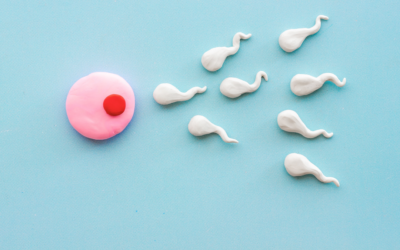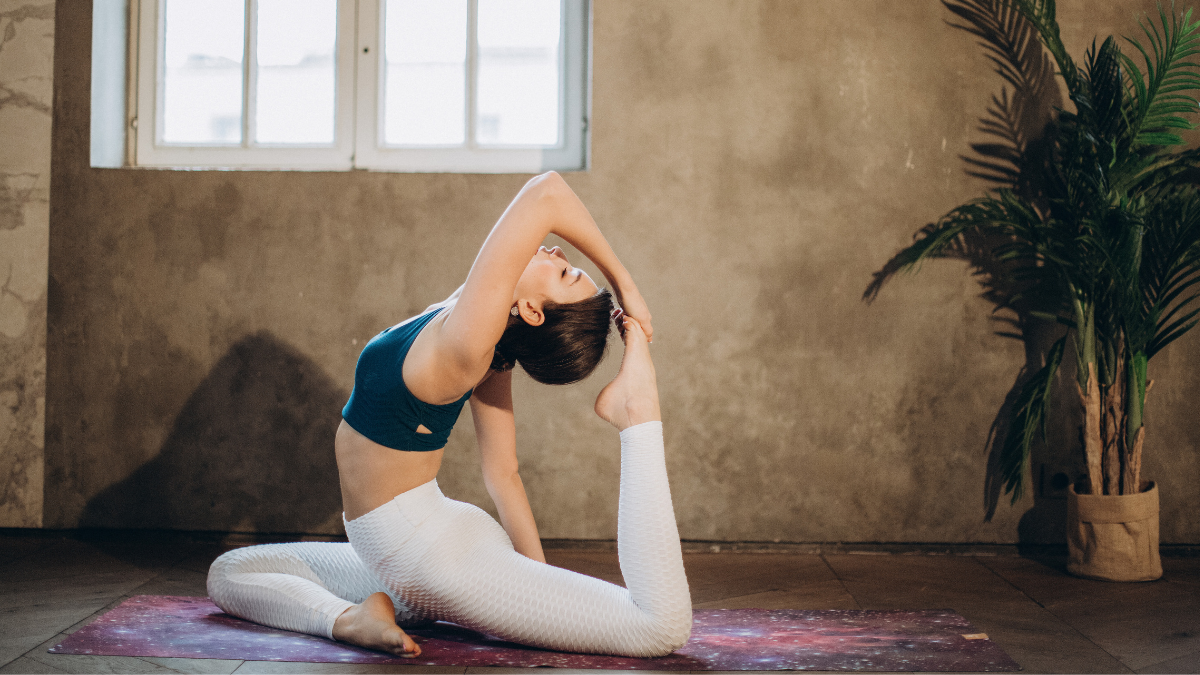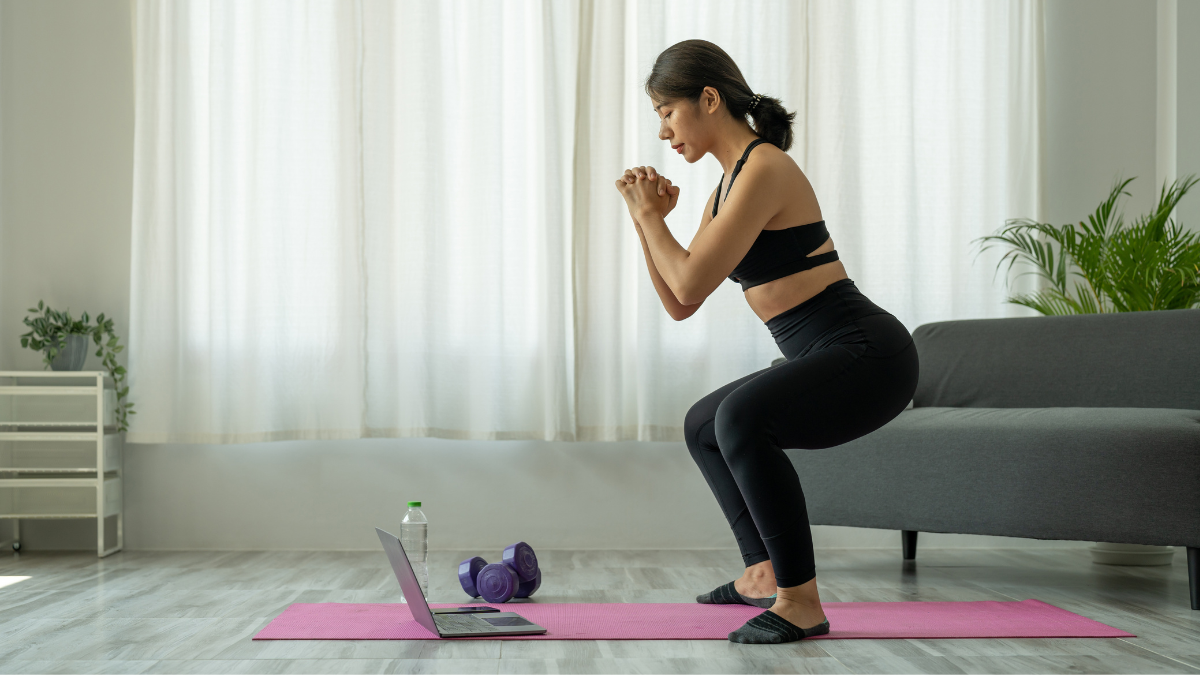Welcoming a new baby into the world is a beautiful, life-changing moment. But as joyful as motherhood is, the postpartum period can feel overwhelming for many women—physically, emotionally, and mentally. That’s where postpartum yoga comes in. This gentle yet powerful practice is more than stretching or exercise. It’s a healing tool that supports your body, mind, and spirit as you adjust to your new life as a mom.
Let’s explore the 101 amazing health benefits of postpartum yoga, so you can feel empowered, supported, and strong after childbirth.
Table of Contents
What Is Postpartum Yoga?
Postpartum yoga is a gentle, restorative form of yoga specifically designed for women after childbirth. It supports the physical, emotional, and hormonal changes that occur in the weeks and months following delivery. Unlike traditional yoga or intense fitness routines, postpartum yoga emphasizes healing over performance. The goal is to rebuild strength, restore balance, and promote a deep sense of well-being for new mothers.
After giving birth, a woman’s body goes through a recovery process that involves more than just physical healing. Hormonal shifts, sleep deprivation, emotional ups and downs, and body image changes can all impact a mom’s overall health. Postpartum yoga offers a safe, nurturing way to address these challenges holistically.
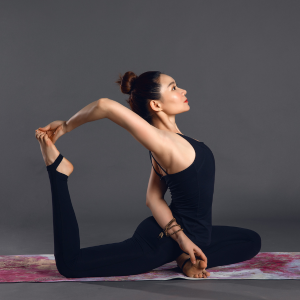
Key Features of Postpartum Yoga:
- Gentle stretching and strengthening
- Focused breathwork and relaxation
- Core and pelvic floor rebuilding
- Mindfulness and emotional release
- Adaptability for all birth experiences (vaginal or C-section)
Whether you’re a first-time mom or welcoming your third baby, postpartum yoga helps you reconnect with your body, manage stress, and build a foundation of strength and peace during one of life’s most transformative times.
Why Postpartum Yoga Matters
Your body has just done something miraculous—it grew, nurtured, and delivered a new life. That journey takes an incredible toll physically, mentally, and emotionally. After childbirth, many new moms feel pressure to “bounce back” quickly. But postpartum yoga isn’t about snapping back into shape. It’s about moving forward with kindness, grace, and deep healing.
The early postpartum period is filled with sleepless nights, hormone shifts, breastfeeding challenges, and endless diaper changes. Amid this whirlwind, your own healing often takes a backseat. That’s exactly why postpartum yoga matters—it offers you a space to pause, breathe, and care for yourself.
Whether you had a vaginal birth or C-section, your body deserves gentle movement, rest, and attention. Postpartum yoga helps you recover at your own pace. It strengthens the muscles that were stretched during pregnancy, relieves common aches, and supports your mental well-being. It’s not about perfection—it’s about progress.
Here’s why every new mom should consider postpartum yoga:
- Heals from the inside out: It nurtures deep tissues, not just surface-level fitness.
- Supports emotional balance: It helps release tension and reduce anxiety or postpartum depression.
- Encourages body appreciation: Instead of criticizing your postpartum body, yoga helps you connect with and honor it.
- Fits your lifestyle: You can do it at home, with or without your baby, and at your own pace.
- Adapts to every birth experience: Whether you had a smooth delivery, a tough labor, or surgery, yoga can be safely modified to suit your needs.
Postpartum yoga isn’t a luxury—it’s a vital form of self-care that helps you feel stronger, calmer, and more like yourself again.
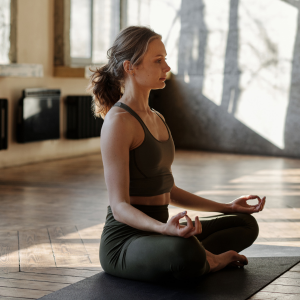
How to Start Postpartum Yoga
When can you start?
- Most moms can begin gentle yoga 6 weeks after a vaginal delivery or 8–10 weeks after a C-section (with doctor approval).
Tips to begin safely:
- Start slow with deep breathing, pelvic tilts, and supported poses
- Choose classes specifically labeled “Postpartum”
- Avoid strong core work in the early weeks
- Focus on breath, not performance
- Use props like cushions and blankets
- Always listen to your body
Best Postpartum Yoga Poses
If you’re wondering where to begin with postpartum yoga, start simple. Your body is healing, so there’s no need to push or perform. These gentle, supportive poses are perfect for easing tension, rebuilding strength, and promoting emotional calm.
All the poses listed below are beginner-friendly, safe for most new moms (once cleared by your doctor), and can be practiced at home—even in your pajamas!
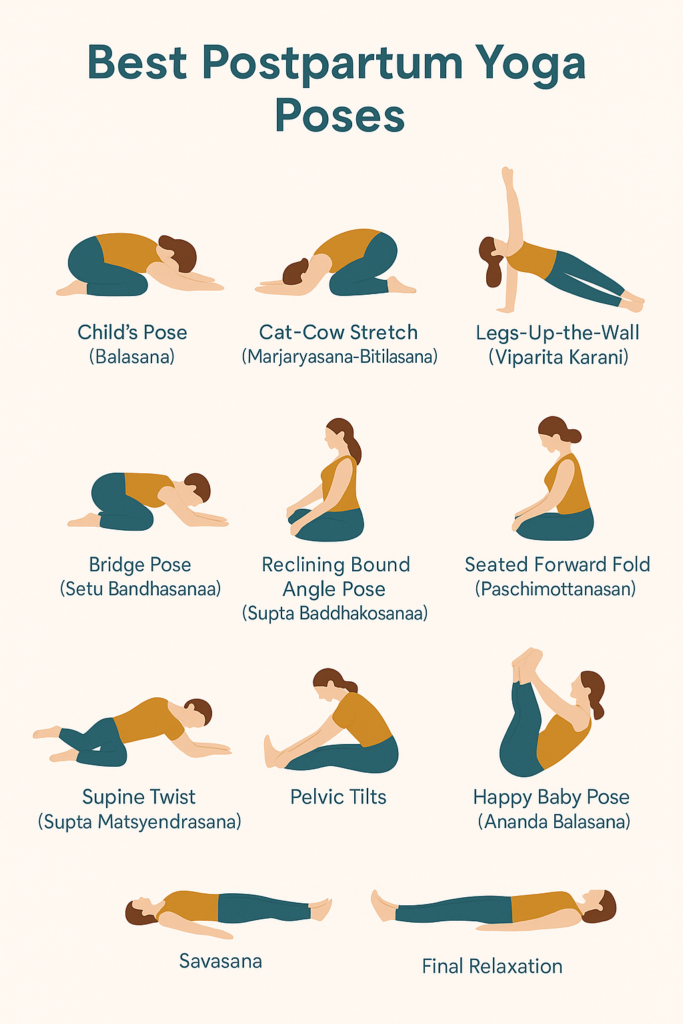
1. Child’s Pose (Balasana)
Why it helps: Relieves back, neck, and shoulder tension while calming your mind.
How to do it:
- Kneel on your mat with big toes touching and knees wide apart.
- Fold forward, resting your forehead on the floor or a cushion.
- Stretch your arms forward or keep them by your sides.
- Breathe deeply and stay for 1–2 minutes.
2. Cat-Cow Stretch (Marjaryasana-Bitilasana)
Why it helps: Gently warms up your spine, improves flexibility, and relieves tension from nursing or holding your baby.
How to do it:
- Start in a tabletop position (hands under shoulders, knees under hips).
- Inhale, arch your back, and lift your head and tailbone (Cow).
- Exhale, round your back, and tuck your chin (Cat).
- Move slowly with your breath for 8–10 rounds.
3. Legs-Up-the-Wall Pose (Viparita Karani)
Why it helps: Reduces swelling in the legs and feet, improves circulation, and promotes total relaxation.
How to do it:
- Sit next to a wall and gently lie on your back.
- Swing your legs up against the wall.
- Rest your arms beside you or on your belly.
- Stay for 5–10 minutes, breathing slowly.
4. Bridge Pose (Setu Bandhasana)
Why it helps: Strengthens your glutes, hamstrings, and lower back while gently engaging your pelvic floor and core.
How to do it:
- Lie on your back with knees bent and feet flat, hip-width apart.
- Press into your feet and slowly lift your hips.
- Clasp hands under your back or leave arms by your sides.
- Hold for a few breaths, then slowly lower down. Repeat 3–5 times.
5. Reclining Bound Angle Pose (Supta Baddha Konasana)
Why it helps: Opens the hips and heart, soothes the nervous system, and supports emotional healing.
How to do it:
- Lie on your back with knees bent.
- Bring the soles of your feet together, letting knees fall open.
- Place pillows under each knee if needed.
- Rest your hands on your belly and breathe deeply for 3–5 minutes.
6. Seated Forward Fold (Paschimottanasana)
Why it helps: Stretches the back, hamstrings, and calms a busy mind—perfect for quiet moments.
How to do it:
- Sit with legs extended.
- Inhale and lengthen the spine.
- Exhale and fold forward gently.
- Rest your hands on your legs, ankles, or feet.
- Stay for 1–2 minutes, avoiding forceful pulling.
7. Supine Twist (Supta Matsyendrasana)
Why it helps: Relieves spinal tension and gently massages internal organs for digestive support.
How to do it:
- Lie on your back and hug one knee into your chest.
- Cross it over your body and extend the opposite arm out.
- Look toward your outstretched arm.
- Stay for 5–10 breaths, then switch sides.
8. Pelvic Tilts
Why it helps: Reconnects you with deep core and pelvic floor muscles, gently rebuilding strength.
How to do it:
- Lie on your back with knees bent and feet flat.
- Inhale, relax the pelvis.
- Exhale, tilt your pelvis up slightly (flattening your lower back).
- Repeat 10–15 times, moving with your breath.
9. Happy Baby Pose (Ananda Balasana)
Why it helps: Opens the hips, stretches the lower back, and adds playfulness to your practice.
How to do it:
- Lie on your back and bend your knees toward your chest.
- Hold the outsides of your feet with your hands.
- Gently rock side to side if it feels good.
- Stay for 5–8 breaths.
10. Savasana (Final Relaxation)
Why it helps: Allows the body to fully absorb the benefits of your practice and supports deep relaxation.
How to do it:
- Lie flat on your back, legs extended, arms by your sides.
- Close your eyes and breathe slowly.
- Stay for at least 5 minutes—or as long as your baby allows!
Tips for a Safe Postpartum Yoga Practice
- Wait for your doctor’s clearance (typically 6 weeks post-vaginal birth or 8–10 weeks after C-section).
- Start slow and stay present.
- Avoid deep abdominal work early on (especially if you have diastasis recti).
- Use props for support—pillows, bolsters, blankets, and even your baby.
- Rest when needed. Yoga is about healing, not pushing.
Postpartum Yoga vs. Regular Yoga: Key Differences
1. Intensity and Pace
- Postpartum Yoga: Slow, gentle, and healing-focused
- Regular Yoga: Often vigorous, fast-paced, and physically demanding
2. Focus Areas
- Postpartum Yoga:
- Core and pelvic floor recovery
- Back, neck, and shoulder tension relief
- Hormonal balance and emotional support
- Regular Yoga:
- General flexibility, strength, and endurance
- Full-body toning with less emphasis on postpartum needs
3. Goals and Purpose
- Postpartum Yoga:
- Healing and recovery
- Stress reduction and emotional grounding
- Reconnecting with your body
- Regular Yoga:
- Fitness improvement
- Pose mastery and flexibility gains
- Building muscle and stamina
4. Modifications and Safety
- Postpartum Yoga:
- Includes safe variations for diastasis recti and C-sections
- Avoids deep twists, core-heavy poses, or pressure on the abdomen
- Regular Yoga:
- Typically not tailored for healing postpartum bodies
- Risk of strain or injury if modified incorrectly
5. Emotional and Mental Support
- Postpartum Yoga:
- Focuses on mental wellness, bonding, and mindfulness
- Helps ease postpartum depression and anxiety
- Regular Yoga:
- Supports mental clarity, but lacks specific focus on postpartum emotions
101 Health Benefits of Postpartum Yoga
Here’s a breakdown of the wide-ranging benefits of postpartum yoga—organized into key areas of wellness:
Physical Healing & Strength Recovery
- Speeds up healing after childbirth
- Strengthens weakened abdominal muscles
- Rebuilds core strength
- Supports pelvic floor recovery
- Improves posture
- Reduces lower back pain
- Realigns the spine
- Alleviates tension in the shoulders and neck
- Helps close diastasis recti
- Supports uterine shrinking
- Improves blood circulation
- Reduces postpartum swelling
- Aids joint stability
- Boosts physical stamina
- Enhances muscle tone
- Encourages healthy movement patterns
- Heals internal scar tissue (especially after C-section)
- Improves body coordination
- Reduces wrist pain (from carrying baby)
- Decreases overall physical fatigue
Pelvic Floor & Reproductive Health
- Strengthens pelvic floor muscles
- Reduces urinary incontinence
- Minimizes the risk of pelvic organ prolapse
- Supports the healing of vaginal tissues
- Improves sensation and control
- Enhances sexual function
- Restores muscle tone around the vagina
- Supports uterus positioning
- Promotes hormonal balance
- Reduces postpartum bleeding duration
Weight Management & Body Shaping
- Boosts metabolism naturally
- Supports healthy weight loss
- Encourages fat burn safely
- Helps tighten abdominal skin
- Reduces postpartum belly pooch
- Tone thighs and hips
- Increases lean muscle mass
- Improves body definition gradually
- Encourages consistent movement
- Supports long-term weight maintenance
Hormonal Rebalancing
- Stabilizes mood hormones (like serotonin)
- Reduces cortisol (stress hormone)
- Boosts oxytocin for bonding
- Supports thyroid function recovery
- Encourages estrogen-progesterone balance
- Reduces hormonal headaches
- Aids in managing hormonal acne
- Supports adrenal recovery
- Improves skin clarity and glow
- Helps regulate returning menstrual cycles
Breathwork & Relaxation
- Expands lung capacity
- Improves oxygen flow to tissues
- Calms the nervous system
- Reduces shortness of breath
- Enhances relaxation response
- Supports emotional grounding
- Alleviates racing thoughts
- Reduces physical tension through breath
- Helps center the mind
- Energizes tired moms
Mental & Emotional Wellbeing
- Reduces symptoms of postpartum depression
- Helps manage anxiety naturally
- Provides a daily moment of peace
- Boosts self-esteem and body image
- Enhances emotional resilience
- Increases clarity and focus
- Reduces mom guilt
- Encourages positive thoughts
- Supports mental recovery after birth trauma
- Fosters self-compassion
Improved Sleep & Energy Levels
- Promotes restful sleep
- Reduces insomnia symptoms
- Helps establish sleep routines
- Supports quicker recovery during naps
- Balances energy through the day
- Reduces mental fog and fatigue
- Eases nighttime anxiety
- Soothes the nervous system before bed
- Encourages melatonin production
- Helps reset your circadian rhythm
Breastfeeding Support
- Promotes milk flow
- Supports oxytocin for let-down
- Improves nursing posture
- Relieves back and shoulder strain
- Reduces engorgement discomfort
- Opens chest muscles
- Encourages calm during feeding
- Boosts hydration and relaxation
- Helps manage breastfeeding anxiety
- Eases upper body tension
Emotional Bonding & Confidence
- Deepens connection with your baby
- Encourages self-trust
- Provides time for emotional reflection
- Increases mindfulness in motherhood
- Fosters patience and presence
- Offers a safe space for healing
- Builds inner strength
- Helps you reconnect with your identity
- Encourages healthy boundaries and self-care
- Supports positive thinking
- Creates a daily ritual of healing and love
Conclusion
The postpartum journey is filled with change—physically, emotionally, and mentally. As a new mom, it’s easy to put your own needs last. But the truth is, your healing and well-being are just as important as your baby’s. That’s why postpartum yoga isn’t just beneficial—it’s essential.
From rebuilding strength and improving sleep to supporting emotional stability and balancing hormones, the 101 health benefits of postpartum yoga are proof of how powerful this gentle practice can be. It meets you exactly where you are, whether you’re 2 weeks or 2 months postpartum, and gives you space to heal at your own pace.
Postpartum yoga helps you reconnect with your body, calm your mind, and find moments of peace in the middle of sleepless nights and diaper changes. It’s not about weight loss or perfection—it’s about restoration, breath, movement, and love.
Every stretch, every breath, and every moment you dedicate to yourself on the mat is a step toward healing from the inside out. These 101 benefits show that postpartum yoga supports not just your recovery, but your growth into a stronger, more centered version of yourself.
So, mama, take that first step. Roll out your mat. Breathe. Move gently. Let your postpartum yoga practice become your anchor in this beautiful, chaotic, and deeply meaningful season of motherhood.
You deserve it.
Frequently Asked Questions (FAQ) About Postpartum Recovery
1. How to shrink the uterus after birth?
Your uterus naturally shrinks over 6–8 weeks. Breastfeeding, postpartum yoga, hydration, and gentle movement (like walking) can support this process.
2. When to walk postpartum?
If you had a vaginal birth without complications, you can usually begin light walking within a few days. Always start slowly and stop if you feel discomfort.
3. How to burn pregnancy belly fat?
Gradual fat loss comes from consistent light activity, a balanced diet, and core-restoring movement like postpartum yoga, not crash diets or intense workouts.
4. How long to get the body back after a baby?
There’s no set timeline. For many women, it can take 6 months to a year or more to feel physically strong again. Focus on healing first, not appearance.
5. Can I do squats 2 weeks postpartum?
It’s best to wait until after your 6-week check-up unless guided by a professional. Gentle pelvic tilts and glute bridges are safer early options.
6. Can you lose postpartum belly by walking?
Yes, walking is a great way to boost metabolism and support belly fat loss, especially when combined with postpartum yoga and core activation.
7. How long to rest postpartum?
The first 6 weeks are critical for rest and healing. Avoid intense activity and prioritize sleep, hydration, and gentle movement.
8. Which day postpartum is the hardest?
Many moms find day 3–5 hardest due to hormone drops, milk coming in, and emotional overwhelm. This is normal and temporary—support matters.
9. How do celebrities get a flat stomach after pregnancy?
Celebrities often have access to private trainers, chefs, and postpartum care teams. Your journey is unique—go slow and focus on wellness, not comparison.
10. Do hips get wider after birth?
Yes, hips can widen during pregnancy and childbirth. Some of this may reverse with time, but changes in bone structure and alignment are normal.
11. What is the first 6 weeks after delivery called?
It’s called the postpartum period or the fourth trimester, a critical time for recovery and bonding with your baby.
12. How to tie stomach after delivery?
Belly wrapping or abdominal binders can offer support and stability early on, but should be used with care and never replace core rehabilitation exercises like in postpartum yoga.
13. Can I take a bath 1 week after giving birth?
Generally, avoid soaking in a tub until after your doctor gives clearance—usually around 4–6 weeks postpartum, especially if you had stitches or a C-section.

